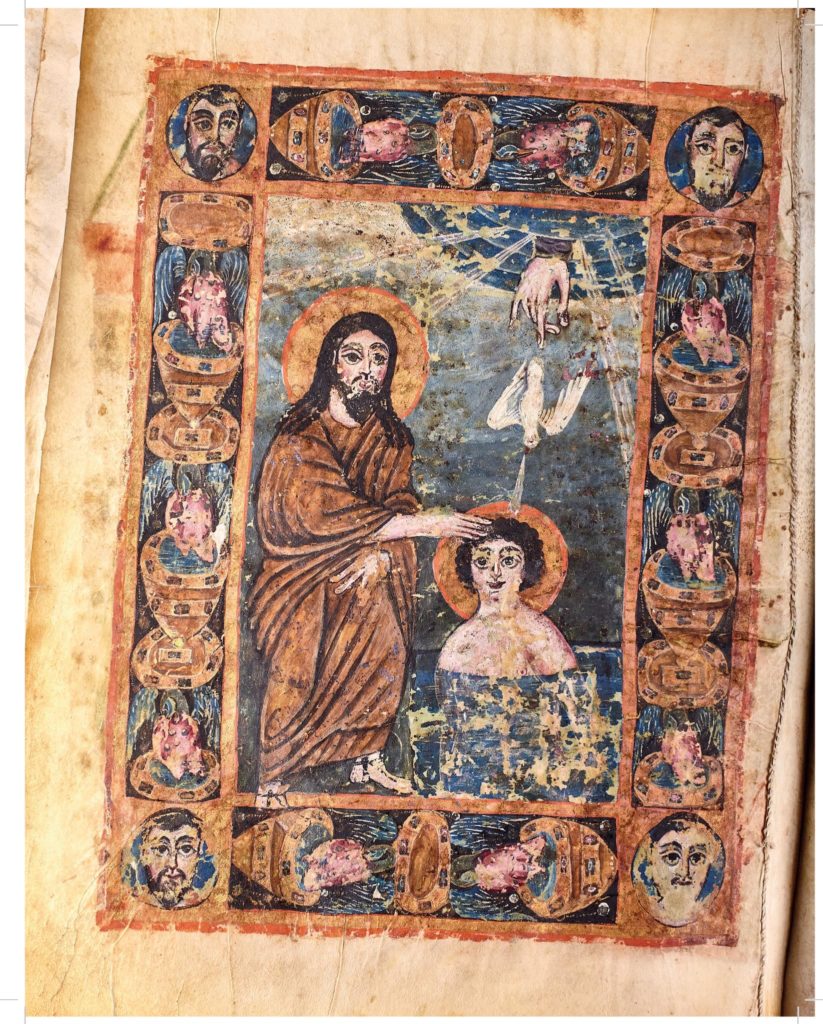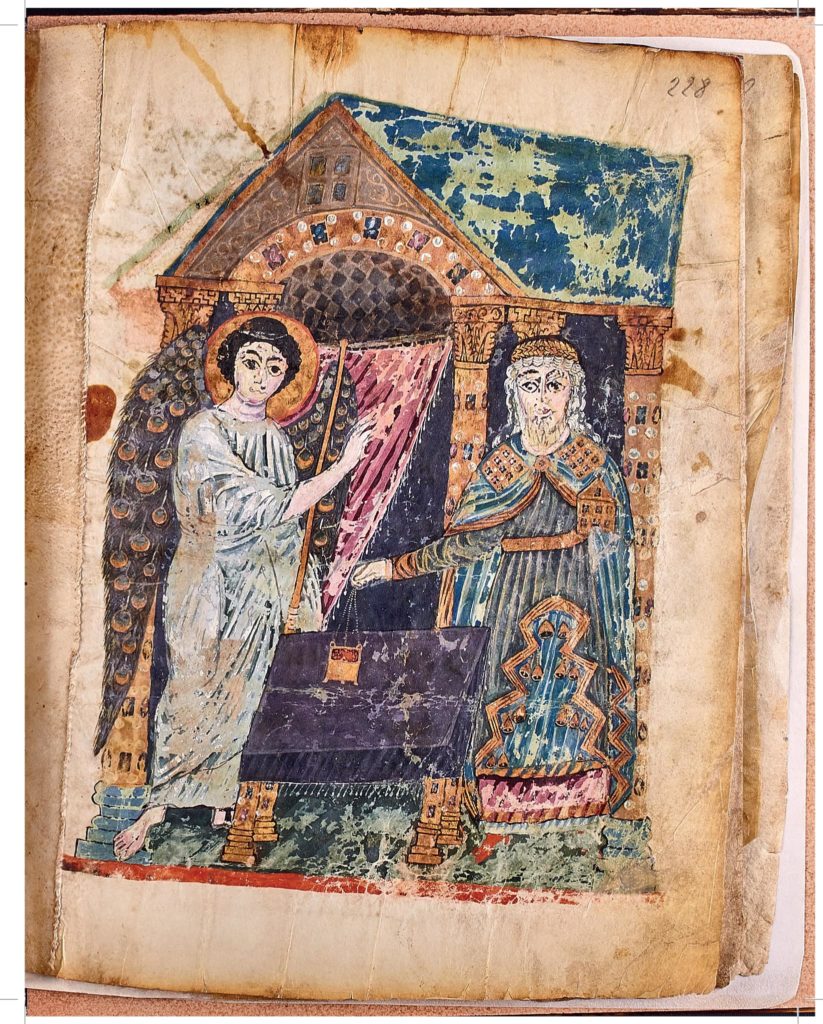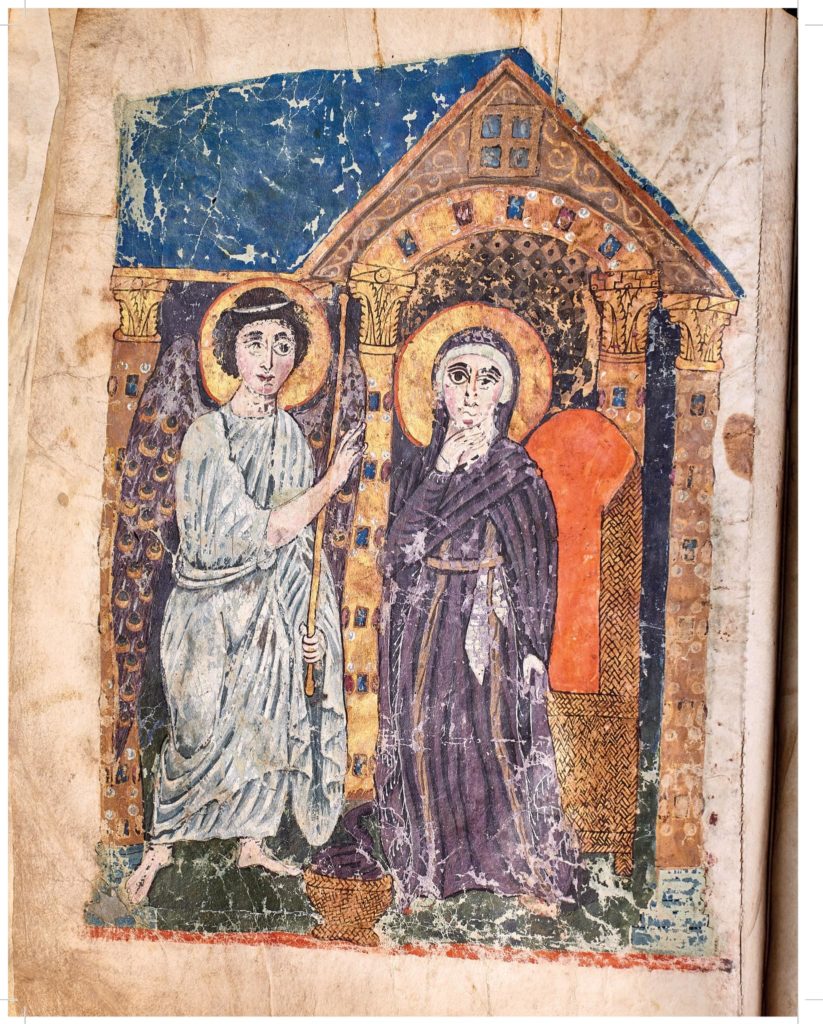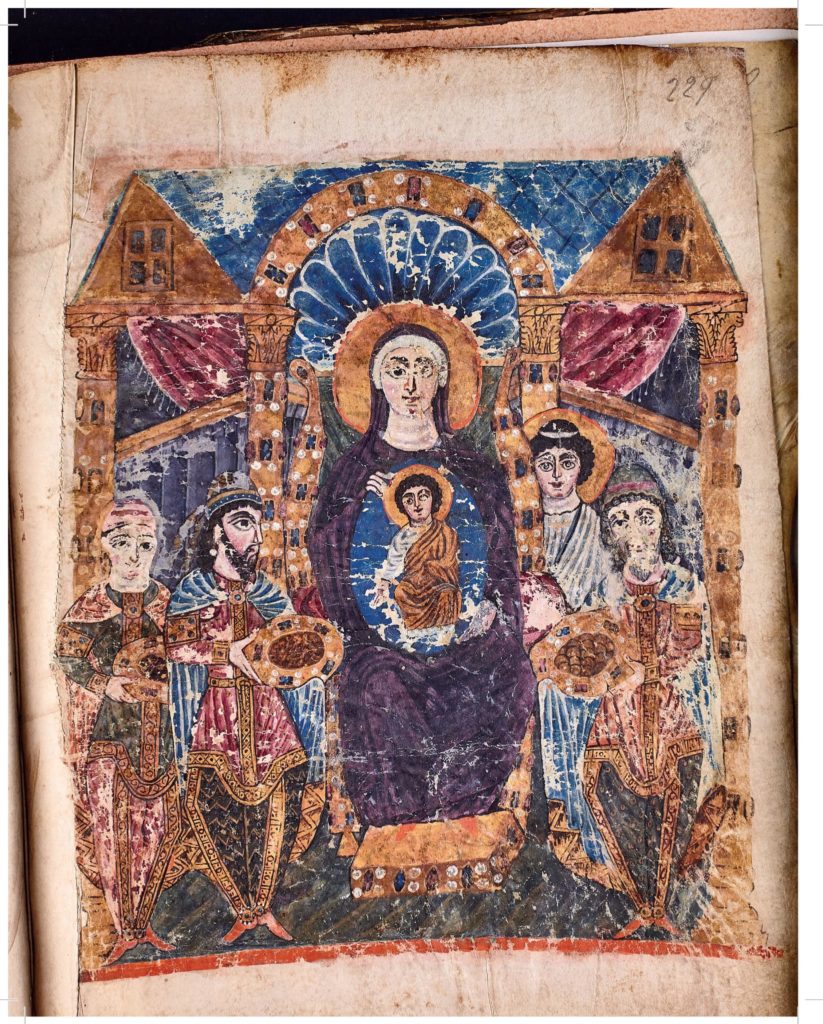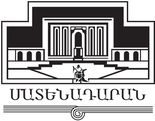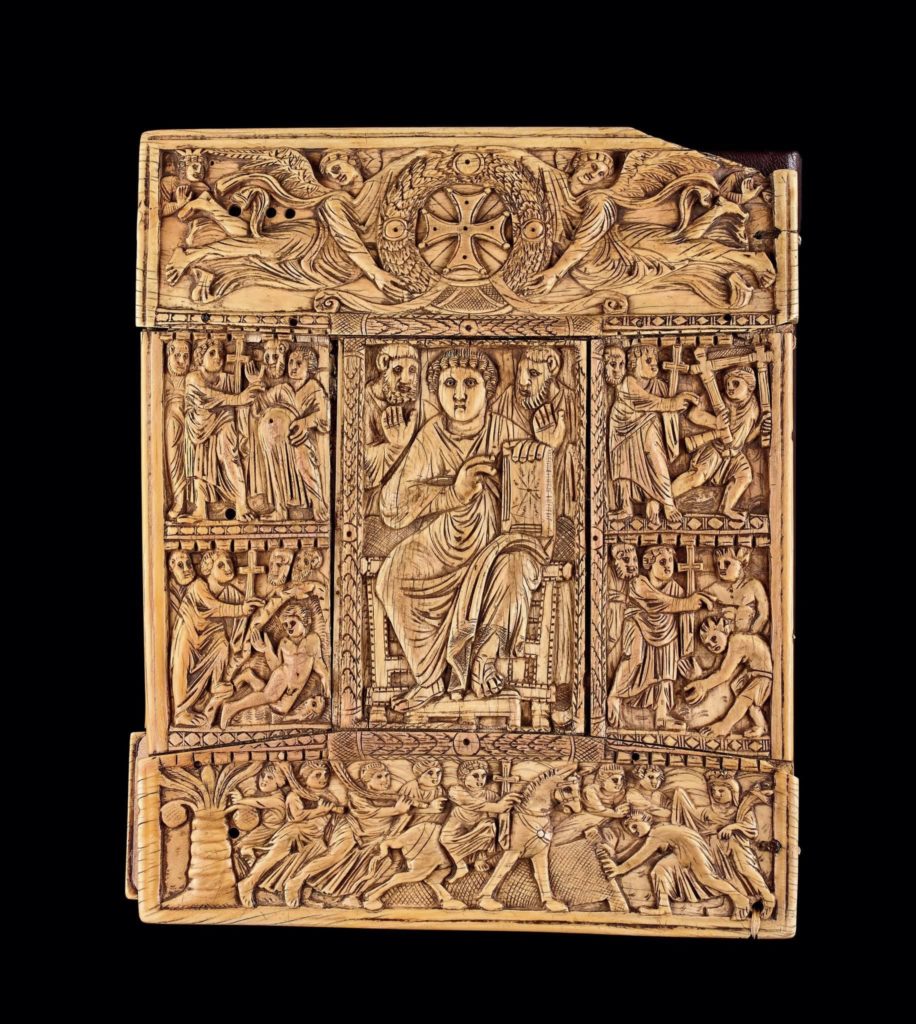
It was copied in 989 in St. Stepanos Church of Bgheno Noravank by order of priest Stepanos, by Hovhannes the scribe. Originally named “the famous gospel of St. Nakhavka of Magharda,” it was later renamed “Gospel of Etchmiadzin” after moving to Etchmiadzin. The Gospel is known for its different writings, artistic decoration, ten tables, five evangelical images, complete colophon, and good preservation. It consists of well-crafted thick sheets of parchment measuring 29.5 x 34.6 cm. The fascicles begin with the Gospel of Matthew, followed by the Gospels of Mark, Luke, and John, and conclude with the “Euchologion.” Unique features of the Gospel include its ivory cover, which belongs to another manuscript. Studies have revealed that the Gospel has lost its cover, and the ivory cover has lost its Gospel. There is no mention in the manuscript of a cover change or repair. During the Baghats kingdom’s abolition and the Turkish Ishmael’s reign, numerous testaments and manuscripts, holy things, and church utensils, including the Gospel of Stephen, were stored in the luxuriant and rich monastery of Tatev. After being re-covered in ivory and sold in 1173, the surviving Gospel was donated to the Magharda monastery, which remained for about eight centuries, 774 years. In 1847, the Gospel was transferred to the Mother See of Holy Etchmiadzin and then to Mashtots Matenadaran via the decree of Catholicos Nerses Ashtaraketsi.
